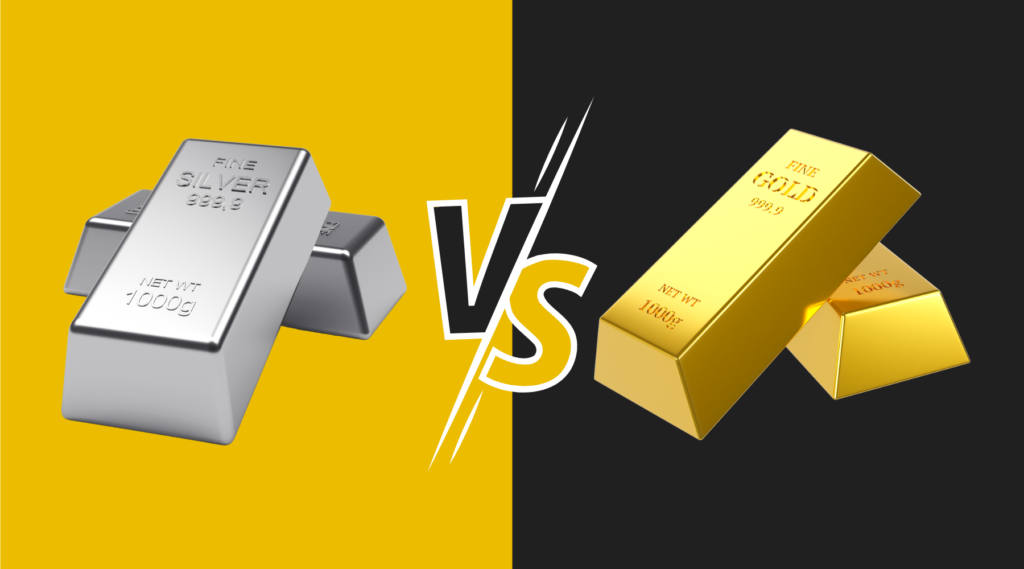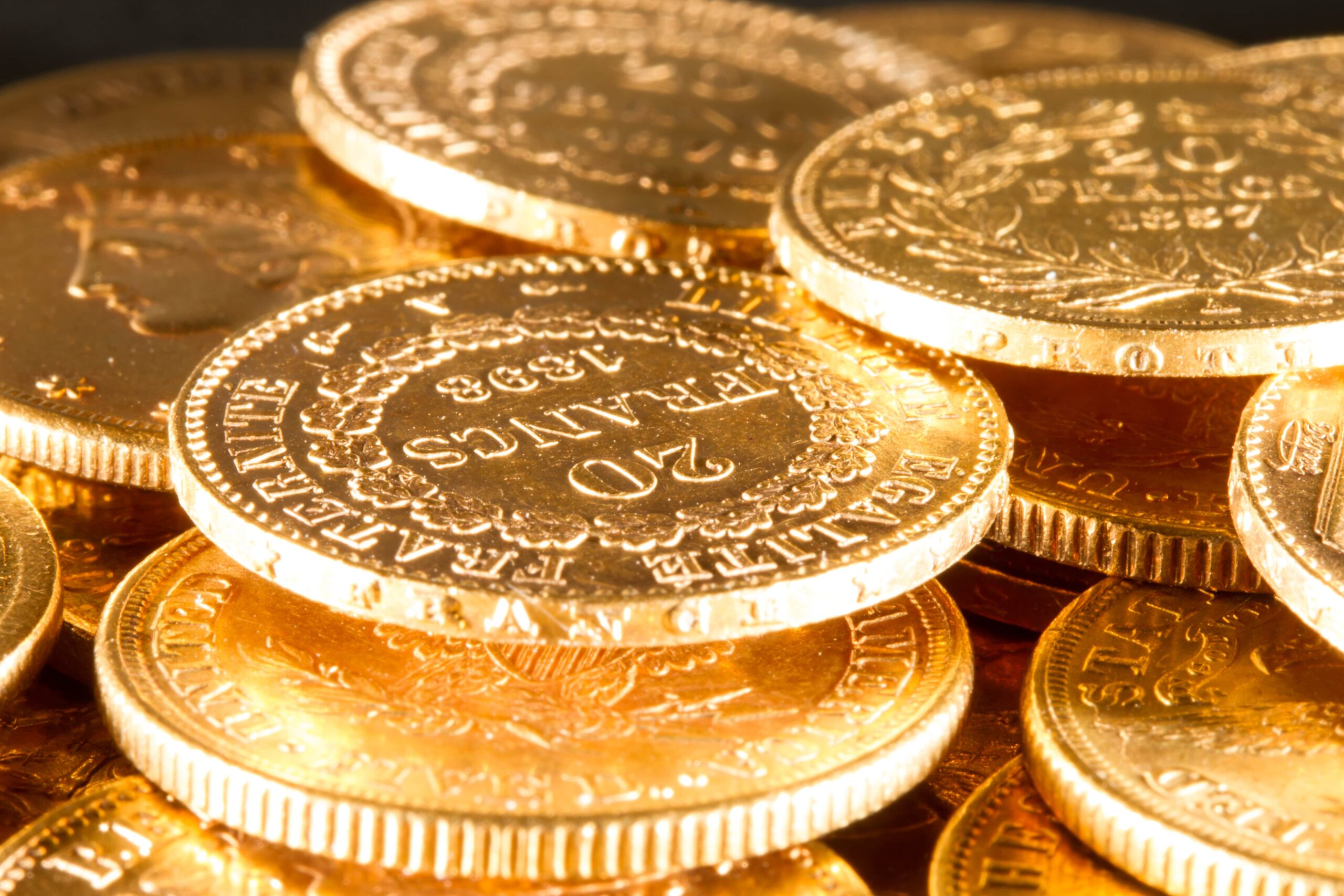
Gold vs. silver investment is a crucial decision for investors in 2025. Both metals have historically been safe-haven assets, protecting wealth during economic uncertainty. However, they serve different purposes and react differently to market conditions.
The best precious metal to invest in 2025 depends on various factors, including inflation, interest rates, and industrial demand. While gold offers long-term stability, silver provides higher volatility and growth potential. Understanding the gold and silver market trends will help investors make informed choices.
This article explores the strengths and risks of both metals, analyzing their future potential and which one may be the better investment in 2025.
The Case for Gold Investment in 2025
Gold has been a store of value for centuries. It is widely used in jewelry, central bank reserves, and investment portfolios. Its ability to hold value during economic downturns makes it a preferred choice for many investors.
Stability and Safe-Haven Appeal
Gold is one of the most stable investments available. During financial crises, investors flock to gold as a hedge against uncertainty. For example:
- During the 2008 financial crisis, gold surged from around $800 per ounce to over $1,800 by 2011.
- In 2020, during the COVID-19 pandemic, gold reached an all-time high of over $2,070 per ounce.
- In 2024, gold remained resilient despite high interest rates and global economic concerns.
The demand for gold increases when economies face downturns. As global conflicts and economic instability continue in 2025, gold remains a strong option for investors looking to preserve wealth.
Inflation and Interest Rates
Gold has always been an excellent hedge against inflation. When the value of fiat currency declines, gold retains its purchasing power. Inflation in 2024 was a significant concern. If inflation continues in 2025, gold prices could rise further.
Interest rates also play a key role in gold prices. When interest rates are high, assets like bonds and savings accounts become more attractive, reducing demand for gold. However, if central banks lower interest rates in 2025, gold prices could rise as investors seek better returns.
Limited Industrial Use
Unlike silver, gold has minimal industrial applications. This means its price is less affected by fluctuations in industrial demand. Gold’s primary use is as a financial asset, which helps maintain its long-term value.
Drawbacks of Gold Investment
- Gold is expensive, making it harder for small investors to accumulate.
- It does not generate passive income like stocks or bonds.
- It has lower volatility, meaning slower price increases compared to silver.
The Case for Silver Investment in 2025
Silver is both a precious metal and an industrial commodity. Its price is influenced by economic growth, industrial demand, and investor sentiment.
Higher Growth Potential
Silver is more volatile than gold. It experiences sharper price swings, offering higher profit potential. During bull markets, silver often outperforms gold.
For example, in 2011, silver surged to nearly $50 per ounce before experiencing a sharp decline. Similarly, in 2020, silver rose from $12 to $29 per ounce in response to economic uncertainty.
If industrial demand remains strong in 2025, silver could see major price gains. Investors looking for higher returns may find silver a more attractive option than gold.
Industrial Demand and Green Energy
Over 50% of silver demand comes from industrial applications. It is used in:
- Electronics: Silver is a key component in semiconductors, batteries, and electrical circuits.
- Solar Energy: Silver is essential in photovoltaic cells, making it crucial for renewable energy.
- Medical Applications: Silver has antibacterial properties, making it valuable in healthcare products.
- Automobile Industry: Silver is increasingly used in electric vehicles (EVs).
As the world shifts toward green energy, silver demand is expected to rise in 2025. Governments worldwide are investing in solar power and electric vehicle production, increasing silver consumption.
Affordability and Accessibility
Silver is significantly cheaper than gold, making it more accessible to retail investors. Those who cannot afford gold can still invest in silver, allowing them to participate in the precious metals market.
Drawbacks of Silver Investment
- Silver is more volatile, making it riskier.
- Its price depends on industrial demand, which can fluctuate.
- It requires more storage space due to its lower price per ounce.
Comparing Gold and Silver in 2025
| Factor | Gold | Silver |
|---|---|---|
| Price Stability | High | Low |
| Inflation Hedge | Strong | Moderate |
| Industrial Demand | Low | High |
| Geopolitical Hedge | Strong | Moderate |
| Investment Cost | High | Low |
| Potential Gains | Moderate | High |
| Central Bank Holdings | Strong | Weak |
| Storage & Portability | Easier | Bulkier |
Both metals have their advantages. Gold is better for long-term stability. Silver offers higher returns but comes with more risk.
Which Precious Metals Portfolio is Best for 2025?
A balanced precious metals portfolio can benefit from both gold and silver. Diversification helps manage risk. Here’s how to structure an ideal portfolio:
- For conservative investors: 80% gold, 20% silver.
- For growth-focused investors: 50% gold, 50% silver.
- For high-risk investors: 30% gold, 70% silver.
This mix allows investors to benefit from gold’s stability while taking advantage of silver’s growth potential.
Gold and Silver Market Trends in 2025
Gold and silver market trends suggest continued demand for both metals. Analysts predict gold will stay above $2,000 per ounce due to economic uncertainty. Silver could see double-digit percentage gains if industrial demand remains strong.
Factors Driving Gold Prices
- Inflation fears and central bank policies.
- Rising geopolitical tensions.
- Central bank gold purchases.
Factors Driving Silver Prices
- Growth in renewable energy and EV sectors.
- Increased industrial production.
- Rising investor interest in precious metals.
Gold vs. Silver Investment: Historical Price Trends
Understanding historical price movements can help investors predict future trends.
- In 2000, gold was around $280 per ounce, while silver was about $5 per ounce.
- In 2011, gold peaked at $1,900 per ounce, while silver hit nearly $50 per ounce.
- In 2020, gold surpassed $2,000 per ounce, while silver rose to $29 per ounce.
Gold has shown steady long-term growth, while silver has experienced more volatility. Investors must consider this when deciding between the two metals.
Final Verdict: Gold vs. Silver Investment in 2025
Choosing between gold vs. silver investment depends on your financial goals. If you seek stability, gold is the better option. If you want high growth potential, silver is the way to go.
The best precious metal to invest in 2025 depends on market trends and risk tolerance. Many investors choose to hold both metals to create a balanced safe-haven assets strategy. A diversified approach ensures protection against economic downturns while taking advantage of silver’s growth potential.
Invest wisely and consider market conditions before making a decision.
Click here to read our latest article What Are Soft Commodities and How to Trade Them?




